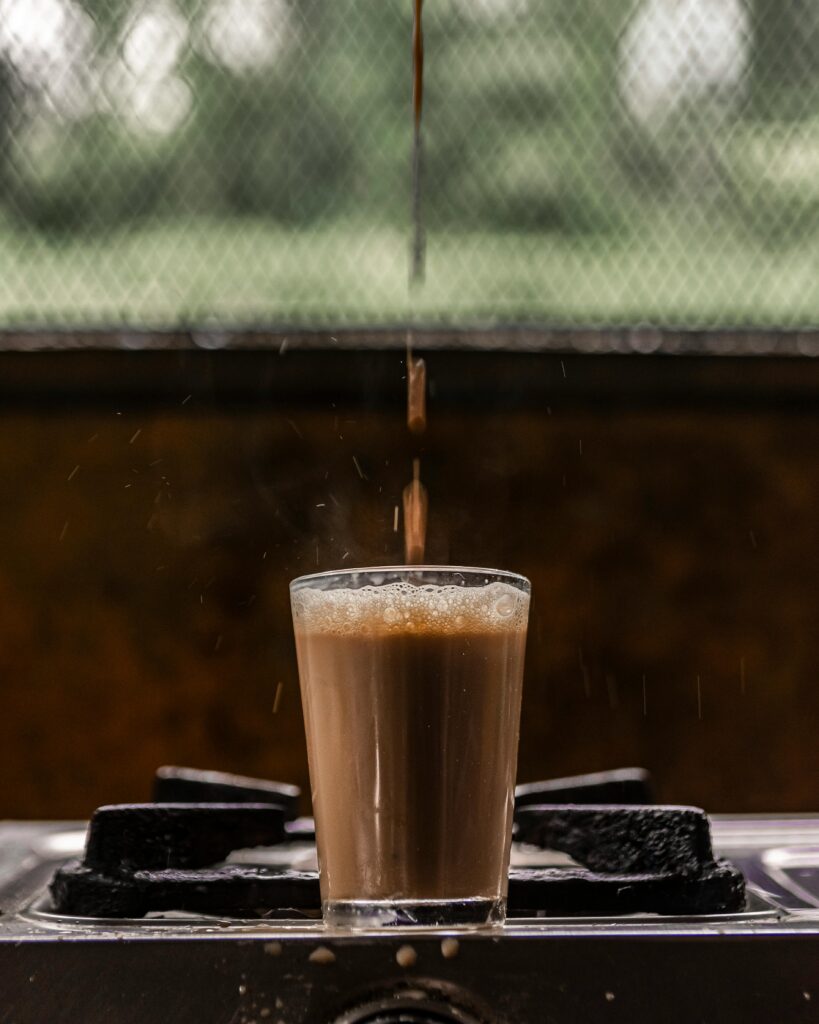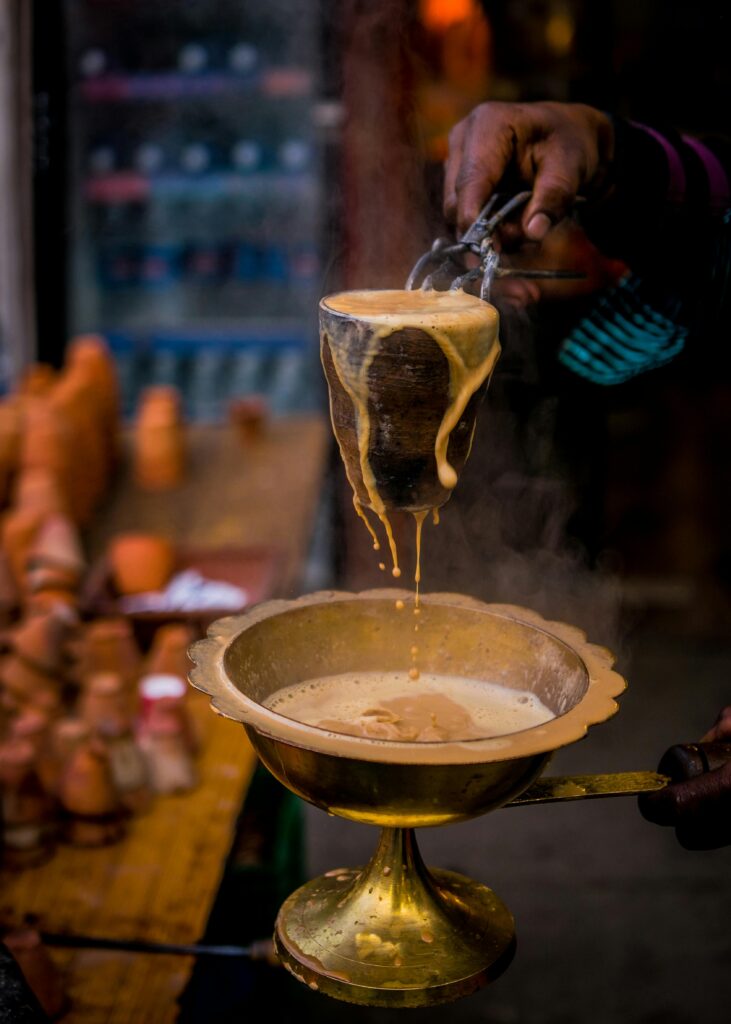The Heartbeat of Pakistani Life
In Pakistan, chai is not just a drink—it’s a tradition, a conversation starter, and a source of comfort. Whether it’s a roadside dhaba serving hot cups in chipped glasses or a luxurious drawing room where guests are welcomed with a steaming pot, chai is woven into the fabric of daily life. To call it just “tea” would be to ignore the cultural depth it holds in Pakistani society.

A Brief History of Chai in Pakistan
The Arrival of Tea in the Subcontinent
Tea was introduced to the Indian subcontinent during the British colonial era. Initially, it was a luxury consumed by the elite, but over time, it spread to the masses, adapting to local tastes and traditions.
How Chai Became a Pakistani Staple
After independence in 1947, Pakistan inherited the tradition of tea drinking but gave it a distinct flavor. Instead of drinking it plain, Pakistanis made it rich with milk, sugar, and sometimes spices—transforming it into chai, the national comfort drink.
Chai as a Cultural Symbol
Hospitality and the First Cup
In Pakistan, no guest leaves without being offered chai. It’s a gesture of warmth and welcome that transcends social and economic boundaries.
Chai in Family Gatherings and Friendships
Evenings in many households revolve around chai time—served with snacks, laughter, and stories. It brings families together and deepens bonds among friends.
Dhaba Culture: Street Tea and Social Bonds
On every highway and city street, dhabas (roadside tea stalls) thrive. These spots are hubs for truck drivers, students, and workers, where chai fuels conversations, debates, and camaraderie.
The Different Faces of Pakistani Chai
Doodh Patti – The Creamy Favorite
A rich, milk-heavy tea simmered to perfection. It’s perhaps the most beloved chai across Pakistan.
Karak Chai – Bold and Strong
Served in smaller cups but packed with flavor, karak chai is especially popular in urban centers.
Kashmiri Chai – Pink Tea with Tradition
A festive tea made with green tea leaves, milk, and baking soda, giving it a pink hue. Often enjoyed at weddings and celebrations.
Masala Chai – Spices That Tell Stories
Infused with cardamom, cloves, or cinnamon, masala chai reflects the regional diversity of Pakistan.
Emotional Connection: More Than a Drink
Chai as Comfort During Stress
From exam cramming sessions to late-night office work, chai offers comfort and focus.
Chai in Celebrations and Festivals
During Eid, weddings, or winter bonfires, chai is an essential part of the menu.
Chai as a Symbol of Togetherness
Sipping chai with loved ones often turns into long conversations that strengthen relationships.
Chai and Social Identity in Pakistan
Rich vs. Poor: A Universal Drink
Chai is unique—it belongs to everyone. Whether you’re in a five-star hotel or a street-side stall, chai connects all classes.
Chai Across Generations
Grandparents drink it for comfort, parents for routine, and youth for late-night hangouts—chai bridges generations.
Chai as a Political and Intellectual Companion
Many political discussions, student movements, and literary debates have sparked over cups of chai at dhabas and campuses.
Chai and Modern Pakistan
Rise of Chai Cafés and Urban Culture
Cities like Karachi, Lahore, and Islamabad are seeing a boom in chai cafés, where the humble drink is now reimagined with modern twists.
Pakistani Chai in Global Food Trends
From Dubai to New York, chai is appearing on menus in cafés and restaurants, introducing the world to Pakistan’s love affair with tea.
Health and Wellness Aspects of Chai
Benefits of Pakistani Chai
- Boosts energy and focus
- Aids digestion (especially masala chai)
- Provides comfort and relaxation
Risks of Overconsumption
- Too much sugar can cause health issues
- Excess caffeine may lead to restlessness

FAQs About Pakistani Chai
Q1: Why is chai so important in Pakistan?
Because it represents hospitality, culture, and daily life—it’s more than a beverage.
Q2: What is the most popular type of chai in Pakistan?
Doodh Patti is the most widely consumed chai.
Q3: How is chai different from regular tea?
Chai is brewed with milk and sugar, often simmered longer, making it richer than regular tea.
Q4: Do Pakistanis drink chai all year round?
Yes! Though it’s especially cherished in winter, chai is consumed in every season.
Q5: Is chai more popular than coffee in Pakistan?
Absolutely. While coffee is trendy in cities, chai remains the national favorite.
Q6: Can I make authentic Pakistani chai at home?
Yes! All you need is black tea, milk, sugar, and patience to simmer it into perfection.
Conclusion: A Cup That Defines a Nation
In Pakistan, chai is not just tea—it’s a cultural emblem, a daily ritual, and a symbol of unity. It bridges gaps between rich and poor, young and old, and strangers and friends. Whether at home, in a café, or at a roadside dhaba, chai carries the essence of Pakistan: warm, inviting, and full of flavor.
So next time you sip a cup of Pakistani chai, remember—you’re tasting a piece of history, culture, and community in every drop.
🔗 Further Reading: BBC Travel – The World’s Obsession with Chai
- Pakistani Chai Explained: History, Culture & Recipes
- tea for beginners
- pakistani vs indian chai
- types of chai
- chai in literature
- chai in subcontinent
- Karak or Masala Chai: Which One’s better?
- masala chai
- From Clay Pot to Cup – The Story of Pakistan’s Matka Chai
- Pakistani Tea Guide: Doodh Patti vs Chai
- Make Perfect Pakistani Chai – A Recipe Loved for Generations